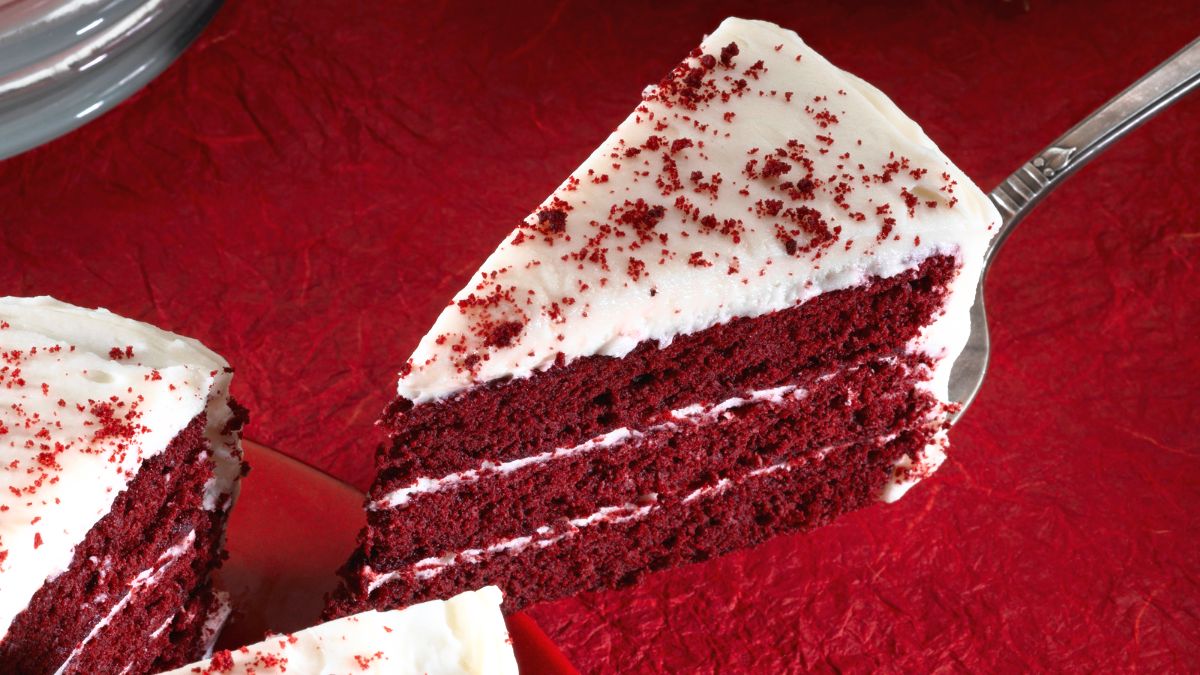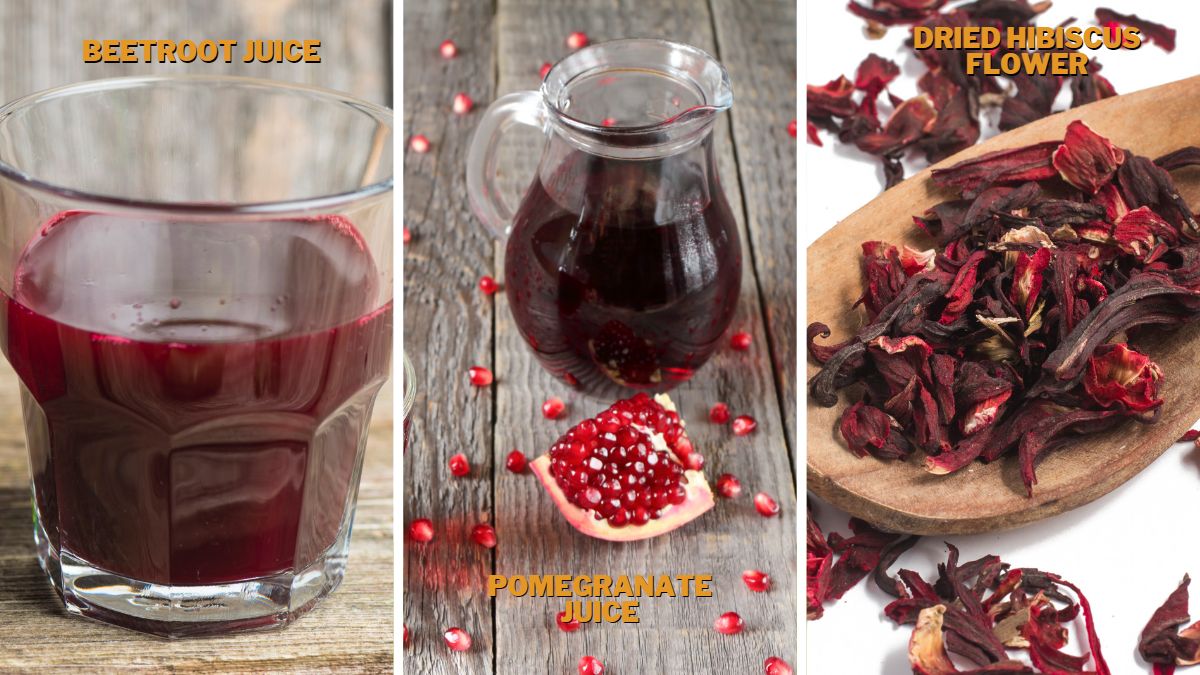Best Food Coloring for Red Velvet Cake

Nothing says Happy Valentine’s Day as a heart-shaped bright red velvet cake. You don’t have to be in love to enjoy a spongy, moist, and tender piece (or more) of gateau. If you’re a baking beginner, you’ll probably be lost with enormous amounts of food coloring choices. Last month, I tried quite a lot of options, so I have some notes I simply must share with you. As with everything else, some are better than others, so here’s a list of the best food coloring for red velvet cake!
Gel, powder, and paste types of red food coloring will give red velvet cake the most intensive tone, while liquid and natural options will be slightly paler. You’ll need more liquid color, plus it tends to mess up the cake’s consistency, while the concentrated alternatives are finer choices as you need smaller amounts.
Baking is my love language, and the perfect shade of red velvet cake is a big deal for me. I tried them all, so I’m writing you the list to choose your favorite from. Read on to find out about varieties, amounts to use, and which brands to pick!
What Type of Food Coloring Is the Best for Red Velvet Cake?
You can use any coloring for red velvet cake, and they just vary in the tone of red and quantity needed for achieving that perfect touch.
Gel Red Food Coloring
Gel food coloring is très potent and will give you a vivid shade of red. It is pretty thick, so you’ll need a tiny amount of the gel for a batter load. Moreover, it has zero chance to change the cake’s flavor or texture, considering you need just a bit. For the best result, I gradually dissolve the gel in liquid by adding a pea-size of it.
Liquid Red Food Coloring
The liquid red coloring is water-based, so it’s noticeably diluted compared with the color you get from a gel-based one. It is a good option to get a pale, pastel shade of red with a gentle undertone. But it has a catch, though.
If you want a strong and deep shade of red, you’ll have to add loads of red liquid coloring, which will undoubtedly change the thickness of the batter. So, this is obviously not the best option for bright-colored cake dough. It also mixes well with vinegar, an unskippable ingredient for soft and spongy cake.
Powder Red Food Coloring
Powder red coloring is the only dehydrated food dye among all, so it’s naturally exceptionally concentrated. The best recommendation I can give you is to start small. Add a bit by bit, mixing it constantly, so you don’t overdo it, as it will go more brownish than red.

Red Concentrated Paste
As its name says, it is heavily potent and will give you a carmine red shade in a heartbeat. It is hands up in a hall of fame of food coloring options; just melt it in some warm water. It won’t affect the taste or the texture, as its quantity is neglectful.
Natural Red Food Coloring

If you want to avoid artificial vibrant red food colorings, here are some ideas on how to replace them. Good alternatives are beetroot juice or pomegranate juice, both pure, beet powder, dried hibiscus flowers, and cranberries. These options are fine, but they won’t give you color as bright as you expect it.
The color will vary depending on what substitute you use, and most importantly, it will influence the flavors. Among these, beet powder is the most logical choice as it’s strongest in color and has a delicate sugary base note. I used two spoons of the powder for the most similar color to a traditional cake, but it needed a bit more acid to prevent oxidation.
The options above are also vegan, and you don’t need to make them at home, as they can also be store-bought. The beetroot-, hibiscus-, and cranberry-based options vary from powder to liquid dyes, so you don’t have to give up the bright red velvet cake look if you’re a plant-based eater.
And if you’re wondering how you can make natural dye at home, here’s a video example. Sadly, there are no measurements, but you can look at the process and decide whether this is the way to go for yourself!
How Much Food Coloring to Add to Get the Perfect Red Color?
Gel food coloring is the most concentrated among all other varieties, so it’s definitely my number one choice to achieve the fancy scarlet red. One teaspoon of gel food coloring is enough if you go for a basic shade of red. But if you want a deeper color, be free to add two or even three teaspoons for a burgundy cake.
Depending on your chosen brand, you’ll need at least two tablespoons of liquid red dye, but double it for a signature bright color or even more. It will mess up the density, and I would place it at the far end of the list of the best choices.
The powder red color comes in sachets of 3 to 5 grams, which is enough to add to the batter. So, opt for that if you don’t bake it regularly. Moreover, if you have bigger packages, that’s a little less than one teaspoon.
The amount of the paste needed for getting bright layers is about one and a half teaspoons melted in 2 tablespoons of water. You can add more, but don’t exaggerate, as you’ll get the counteract.
When adding natural red food dye, do it step by step to decide when it’s enough. However, remember that you’ll need it more than artificial food colors.
What Food Coloring Brands to Choose?
Magic Colours is a splendid choice for gel food colorings, plus it’s vegan. Great Value and Wilton are amazing, too. You can also find red powder color from AmeriColor, Larissa Veronica, and HEMANI.
Liquid colors of choice are McCormick Culinary Red Food Coloring, Chefmaster, and Larissa Veronica. Moreover, vegan options come from Plus Green Natural and Food to Live. Keep baking, and feel free to extend this list, but I think it’s a good starting point, isn’t it?
Why Is Red Velvet Cake Red? Can You Add Other Colors?
If we go back to history, velvet cake wasn’t as red as we know it today. It was, in fact, brownish with a dark red undertone due to the cocoa and acid reaction. Then, some cooks used beetroot juice as a base liquid for making it, and it got a brighter red color.
With the evolution of cooking science, nowadays, we have a signature red color we all adore! It is a fun and eye-catching central piece of any holiday table. You don’t need to add the coloring at all; the taste will remain the same, though. But you can also dye it pink for Valentine’s Day, green for Christmas or St. Patrick’s Day, blue for the 4th of July, or any other color you love!
Have you ever tried a velvet cake that wasn’t red? Which color was it? I can’t wait to hear about your velvet experience in the comments below!
